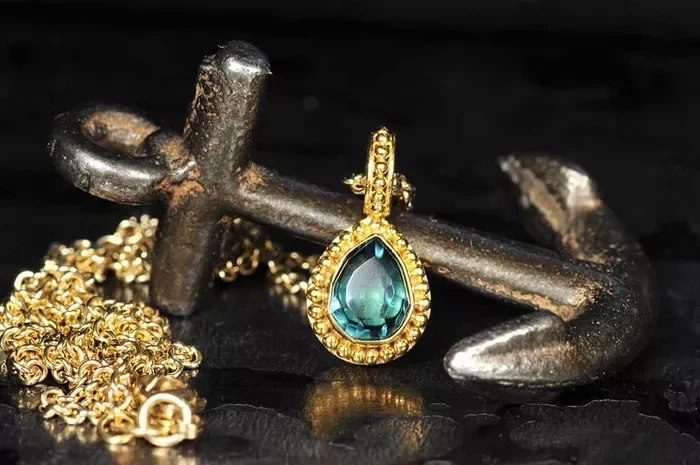Lepidolite and tourmaline are both minerals found in nature, each with unique properties and characteristics. Understanding their relationship requires a detailed exploration of their geological origins, physical properties, and potential uses. This article aims to provide a comprehensive introduction to these minerals, highlighting their similarities and differences in a popular science style.
Geological Origins
Lepidolite and tourmaline are both minerals that occur naturally in pegmatites, which are large, coarse-grained igneous rocks that form slowly underground. Pegmatites are rich in various minerals, including those containing lithium, such as lepidolite, and those with complex borosilicate compositions, like tourmaline.
Lepidolite
Lepidolite belongs to the mica group of minerals and is a significant source of lithium. It commonly occurs in medium- to fine-grained aggregates, with well-developed crystals of a sharp hexagonal outline being less common. Lepidolite’s color varies from lilac, gray-green to pale yellow, and it often displays a pearly or vitreous luster. This mineral is an important industrial raw material for extracting lithium, which is widely used in batteries, ceramics, and glass industries.
Tourmaline
Tourmaline, on the other hand, is a borosilicate mineral of complex and variable composition. It is characterized by its distinct crystalline structure and variable colors, which can range from black (schorl, a type of iron tourmaline) to brown (dravite, a magnesium tourmaline), pink (rubellite), green (Brazilian emerald), or even colorless (achroite). Tourmaline crystals are often found in pegmatites and metamorphosed limestones in contact with granitic magmas. Because of its resistance to weathering, tourmaline accumulates in detrital deposits and is a common accessory mineral in sedimentary rocks.
Physical Properties
The physical properties of lepidolite and tourmaline are distinct, making them easy to distinguish even for those unfamiliar with mineralogy.
Lepidolite
Lepidolite’s physical properties include a hardness of 2.5 to 3 on the Mohs scale, making it relatively soft. Its specific gravity ranges from 2.7 to 2.9, indicating that it is denser than water but lighter than many other minerals. Lepidolite’s cleavage is perfect in one direction, allowing it to be easily split into thin flakes. These flakes often show a slight marginal break and are not quite continuous, a characteristic that helps in identifying the mineral.
Tourmaline
Tourmaline, with a hardness of 7 to 7.5 on the Mohs scale, is significantly harder than lepidolite. Its specific gravity varies depending on the composition, ranging from about 2.95 to 3.32. Tourmaline crystals are often prismatic and may exhibit a hexagonal cross-section. They can be transparent, translucent, or opaque, with some crystals displaying a strong pleochroism, meaning they appear different colors when viewed from different angles.
Chemical Composition
The chemical composition of lepidolite and tourmaline further distinguishes them.
Lepidolite
Lepidolite is composed primarily of alkaline fluosilicate of lithium, potassium, and aluminum. Its chemical formula is typically written as KLi₂AlSi₃O₈(F,OH)₂, with variable amounts of other elements such as sodium, magnesium, and iron substituting for some of the potassium, lithium, and aluminum. This composition explains lepidolite’s significance as a lithium source.
Tourmaline
Tourmaline’s chemical composition is more complex, with a general formula of Na(Li,Al)₃Al₆(Si₆O₁₈)(BO₃)₃(OH)₃(OH,F)₄. The mineral contains a combination of sodium, lithium, aluminum, silicon, boron, oxygen, hydrogen, and fluorine (or ohydrogen). The variable substitution of elements within this formula accounts for the different types and colors of tourmaline.
Occurrence and Extraction
The occurrence and extraction methods of lepidolite and tourmaline reflect their unique geological and physical properties.
Lepidolite
Lepidolite is commonly found in lithium-bearing pegmatites, which are often associated with granite intrusions. Extraction involves mining the pegmatites and then processing the ore to separate the lepidolite from other minerals. This can involve crushing, grinding, and flotation processes to concentrate the lepidolite. Once concentrated, the lithium is extracted through various chemical processes, such as sulfation roasting and water leaching.
Tourmaline
Tourmaline occurs in a variety of rock types, including pegmatites, metamorphosed limestones, and hydrothermal veins. Its extraction typically involves mining the host rock and then sorting and cutting the tourmaline crystals. Because of its hardness and durability, tourmaline is often cut and polished into gemstones, making it a popular choice for jewelry.
Uses and Applications
The diverse properties of lepidolite and tourmaline make them useful for a wide range of applications.
Lepidolite
Lepidolite’s primary use is as a source of lithium, which is essential for modern technology. Lithium is used in batteries, ceramics, glass, and even in the pharmaceutical industry. Lepidolite’s softness and pearly luster also make it suitable for use in decorative applications, such as carvings and ornaments.
Tourmaline
Tourmaline’s hardness, durability, and beautiful colors make it a highly sought-after gemstone. It is used in a variety of jewelry pieces, including rings, necklaces, and bracelets. In addition to its gemstone use, tourmaline’s piezoelectric properties make it suitable for use in pressure-sensing devices and other electronic applications. Tourmaline is also used in industrial applications, such as abrasives and refractory materials.
Relationship and Interaction
Despite their differences in composition, physical properties, and uses, lepidolite and tourmaline share a common geological origin in pegmatites. Their coexistence in the same rock types indicates that they can form under similar geological conditions. However, their distinct properties and uses highlight their unique roles in nature and human society.
conclusion
In summary, lepidolite and tourmaline are two distinct minerals with unique properties and applications. Lepidolite, as a source of lithium, is crucial for modern technology and industrial processes. Tourmaline, on the other hand, is valued for its beauty and durability, making it a popular choice for jewelry and decorative purposes. Understanding their geological origins, physical properties, and uses helps us appreciate their significance and potential in various fields.
Related topic:
- Is Tourmaline a Gem or a Stone?
- How Is Tourmaline Formed Naturally?
- What Is Tourmaline Stone Good For?


